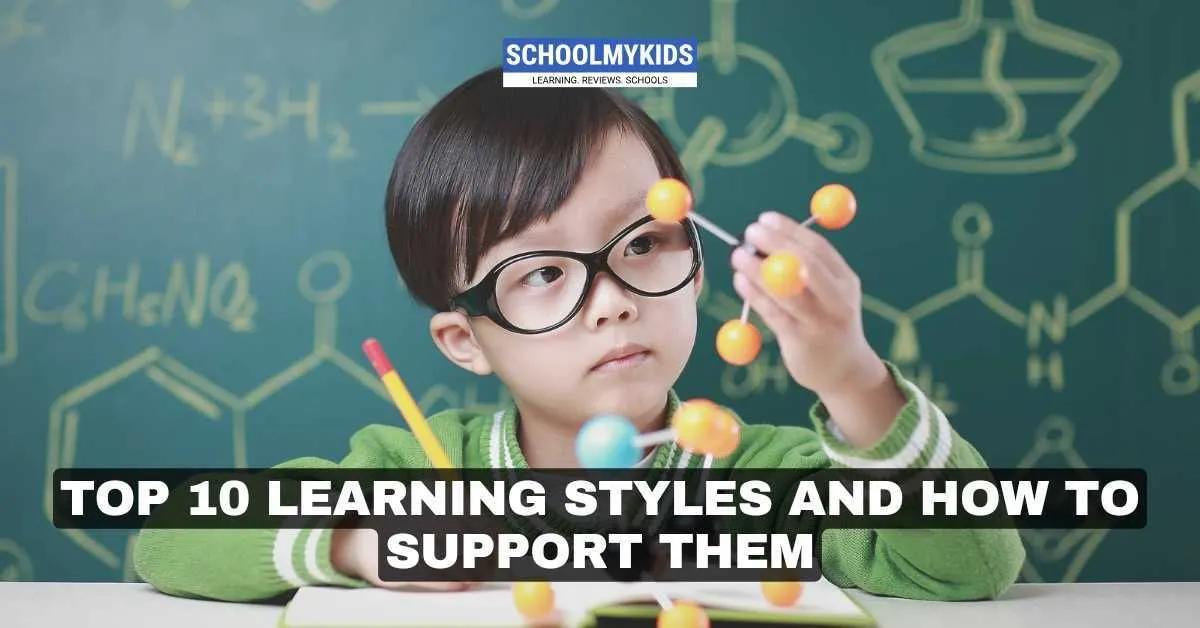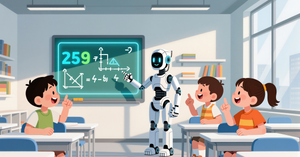Every student learns differently, and understanding these learning styles can help educators and parents tailor their teaching strategies to support students more effectively. By recognizing individual preferences and strengths, teachers can create a more inclusive and engaging learning environment. Here are the top 10 learning styles and strategies for supporting them:
Top 10 learning styles and strategies for supporting them
1. Visual Learners
Visual learners process information best through images, diagrams, and other visual tools. They excel when content is presented in a way that they can see, such as charts, graphs, or videos.
- Support Strategies:
- Use diagrams, flowcharts, and mind maps to explain concepts.
- Incorporate visual aids such as PowerPoint presentations, infographics, and video tutorials.
- Encourage note-taking using color-coding and visual organization methods (e.g., highlighting or using symbols).
2. Auditory Learners
Auditory learners absorb information better through listening. These students often excel in lectures, discussions, and verbal instructions.
- Support Strategies:
- Incorporate verbal explanations, discussions, and oral storytelling into lessons.
- Use audiobooks, podcasts, or recorded lectures to supplement written materials.
- Encourage group discussions and verbal repetition to reinforce learning.
3. Reading/Writing Learners
Reading/writing learners prefer to learn through written words. They excel in traditional learning environments that emphasize reading and writing.
- Support Strategies:
- Provide reading materials, such as textbooks, articles, and reports.
- Encourage students to take detailed notes during lectures or when reading.
- Assign writing tasks, such as essays, summaries, or journal entries, to reinforce learning.
4. Kinesthetic Learners
Kinesthetic learners prefer to learn by doing. These students learn best through hands-on activities, physical movement, and real-world experiences.
- Support Strategies:
- Incorporate hands-on activities, experiments, or practical projects into the curriculum.
- Use interactive learning tools like building models, role-playing, or manipulatives (e.g., in math or science lessons).
- Encourage movement during lessons, such as using standing desks, classroom activities, or stretching breaks.
5. Logical (Mathematical) Learners
Logical learners prefer structured, logical, and analytical approaches to learning. They excel in problem-solving, math, and critical thinking activities.
- Support Strategies:
- Provide puzzles, logic games, or problem-solving challenges.
- Use flowcharts and cause-and-effect diagrams to explain complex concepts.
- Encourage activities that involve organizing data, making lists, or finding patterns.
6. Social (Interpersonal) Learners
Social learners thrive in group settings and learn best through interaction with others. They benefit from collaboration, discussion, and shared learning experiences.
- Support Strategies:
- Incorporate group projects, peer discussions, and cooperative learning activities.
- Facilitate classroom debates, study groups, or team-based activities.
- Encourage peer tutoring or mentorship programs where students can learn from one another.
7. Solitary (Intrapersonal) Learners
Solitary learners prefer to work alone and focus on self-reflection and introspection. They often benefit from independent study and personalized learning goals.
- Support Strategies:
- Provide opportunities for independent projects, research, or self-paced assignments.
- Encourage goal setting, journaling, or personal reflection activities.
- Offer quiet spaces for focused learning and study time.
8. Verbal (Linguistic) Learners
Verbal learners excel in reading, writing, and speaking. They have a strong affinity for language and are often skilled in expressing ideas through words.
- Support Strategies:
- Incorporate activities that involve writing, reading aloud, or oral presentations.
- Use language-based games such as word puzzles, storytelling, or debates.
- Encourage creative writing tasks, such as essays, poetry, or speeches.
9. Musical Learners
Musical learners process information best through rhythm, sound, and music. These students often excel when learning through songs, patterns, or auditory cues.
- Support Strategies:
- Integrate music or rhythm into lessons, such as creating songs to memorize facts or using rhythmic patterns to explain concepts.
- Encourage students to use background music while studying (if it helps with focus).
- Offer opportunities for musical expression, such as composing or analyzing lyrics related to the subject matter.
10. Naturalistic Learners
Naturalistic learners connect best with nature and the environment. They enjoy learning through outdoor activities and exploring the natural world.
- Support Strategies:
- Incorporate nature-based learning experiences, such as outdoor field trips, environmental science projects, or gardening.
- Use natural examples to explain concepts, such as patterns in nature to explain mathematical relationships.
- Encourage hands-on learning activities that involve observing, collecting, or experimenting with natural objects.
Conclusion
Understanding these different learning styles allows educators and parents to support students more effectively by tailoring their teaching strategies to meet individual needs. By offering a variety of learning experiences and tools, teachers can engage students in ways that resonate with them, ensuring a more inclusive and successful learning environment. Whether a student learns best through visual aids, hands-on activities, or collaboration, acknowledging and supporting their preferred learning style will help them reach their full potential.









Be the first one to comment on this story.